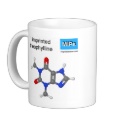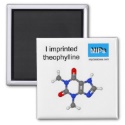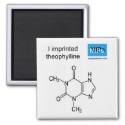|
|
Reference type: Journal
Authors: Moreira FTC, Sales MG
Article Title: Biomimetic sensors of molecularly-imprinted polymers for chlorpromazine determination.
Publication date: 2011
Journal: Materials Science and Engineering: C
Volume: 31
Issue: (5)
Page numbers: 1121-1128.
DOI: 10.1016/j.msec.2011.04.012
Alternative URL: http://www.sciencedirect.com/science/article/pii/S0928493111001172
Abstract: A new man-tailored biomimetic sensor for Chlorpromazine host-guest interactions and potentiometric transduction is presented. The artificial host was imprinted within methacrylic acid, 2-vinyl pyridine and 2-acrylamido-2-methyl-1-propanesulfonic acid based polymers. Molecularly imprinted particles were dispersed in 2-nitrophenyloctyl ether and entrapped in a poly(vinyl chloride) matrix. Slopes and detection limits ranged 51-67 mV/decade and 0.46-3.9 μg/mL, respectively, in steady state conditions. Sensors were independent from the pH of test solutions within 2.0-5.5. Good selectivity was observed towards oxytetracycline, doxytetracycline, ciprofloxacin, enrofloxacin, nalidixic acid, sulfadiazine, trimethoprim, glycine, hydroxylamine, cysteine and creatinine. Analytical features in flowing media were evaluated on a double-channel manifold, with a carrier solution of 5.0 x 10-2 mol/L phosphate buffer. Near-Nernstian response was observed over the concentration range 1.0 x 10-4 to 1.0 x 10-2 mol/L. Average slopes were about 48 mV/decade. The sensors were successfully applied to field monitoring of CPZ in fish samples, offering the advantages of simplicity, accuracy, automation feasibility and applicability to complex samples
Template and target information: chlorpromazine, CPZ
Author keywords: Chlorpromazine, Molecularly-imprinted sensors, Potentiometry, FIA, Fish
|


 theophylline template mug ball and stick
theophylline template mug ball and stick







 I imprinted theophylline magnet ball and stick
I imprinted theophylline magnet ball and stick







 I imprinted theophylline magnet
I imprinted theophylline magnet






